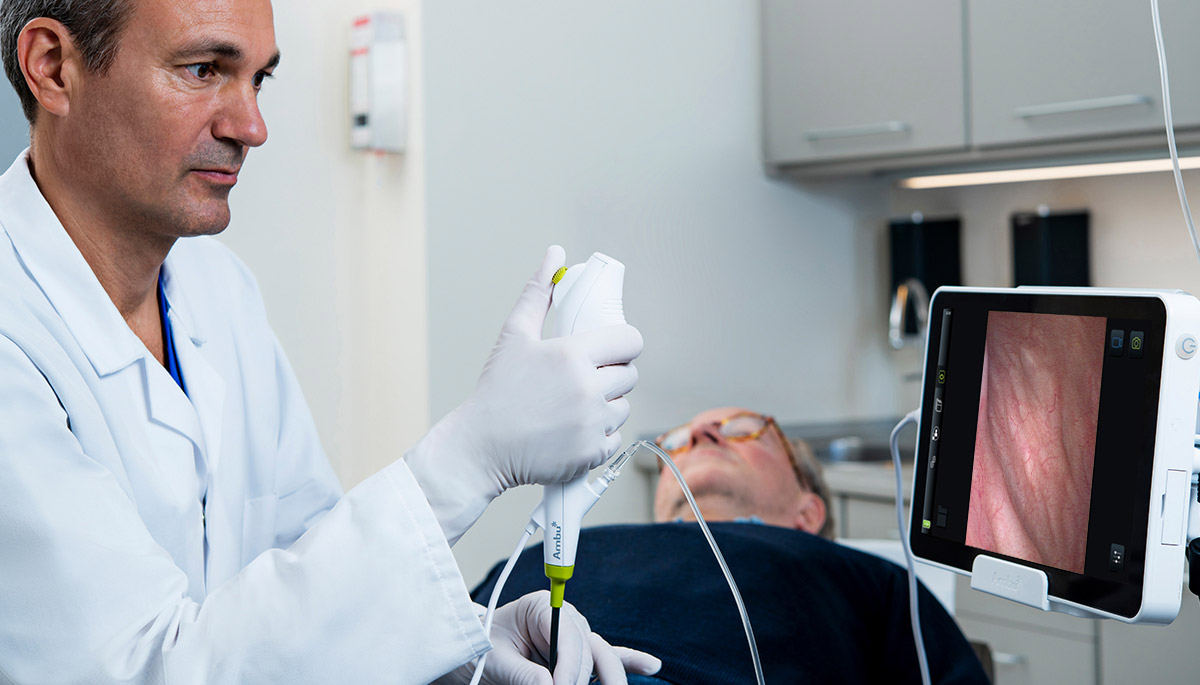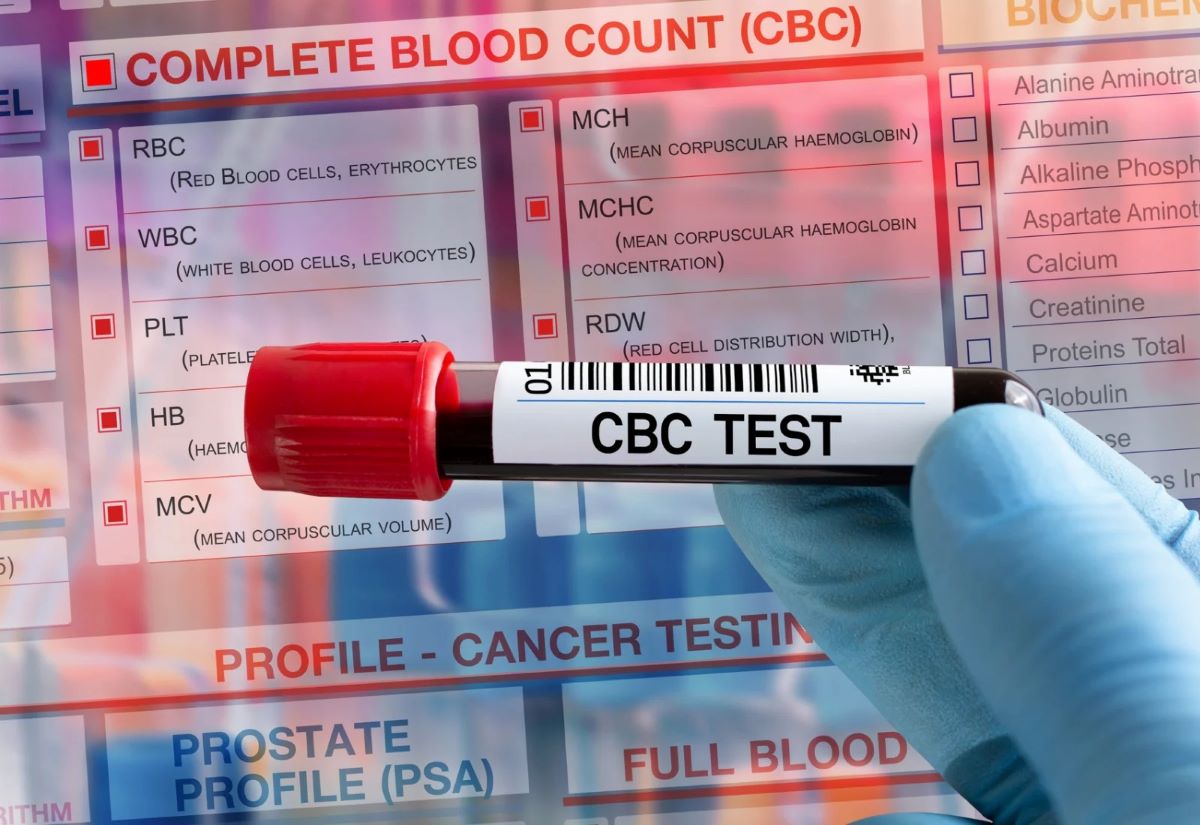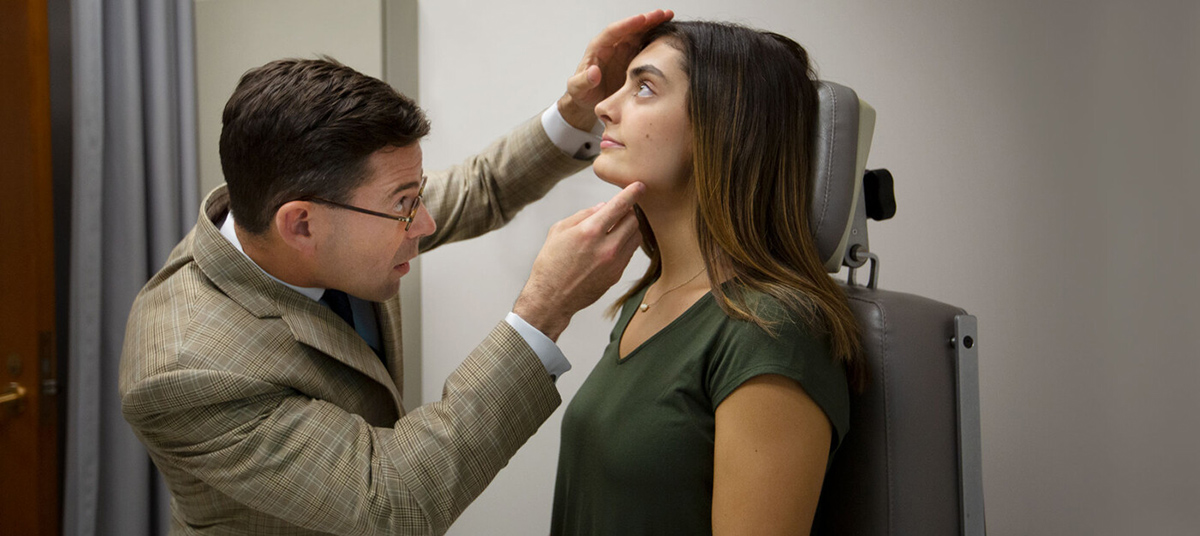

Finance
How Much Does Leep Cost Without Insurance
Published: November 12, 2023
Find out the cost of Leep procedure without insurance and explore financing options for your medical expenses. Gain insights into managing your finances efficiently.
(Many of the links in this article redirect to a specific reviewed product. Your purchase of these products through affiliate links helps to generate commission for LiveWell, at no extra cost. Learn more)
Table of Contents
- Introduction
- What is LEEP?
- Why would someone need a LEEP procedure?
- Understanding the cost of LEEP without insurance
- Factors that influence the cost of LEEP without insurance
- Average cost of LEEP without insurance
- Additional expenses to consider
- How to manage the cost of LEEP without insurance
- Financing options for LEEP without insurance
- Conclusion
Introduction
If you have ever considered undergoing a LEEP procedure but find yourself without insurance, you may be wondering about the potential cost. LEEP, which stands for Loop Electrosurgical Excision Procedure, is a common surgical technique used to remove abnormal cells from the cervix. While the cost can vary depending on a variety of factors, understanding the potential expenses involved can help you make informed decisions about your healthcare.
In this article, we will explore the cost of LEEP without insurance and discuss the factors that can influence the overall expense. We will also provide some tips on how to manage the cost and explore potential financing options.
Before we dive into the details, it is important to note that healthcare costs can vary significantly depending on factors such as location, healthcare providers, and individual circumstances. The information presented here is intended as a general guide, and it is always recommended to consult with a healthcare professional for personalized advice.
What is LEEP?
LEEP, which stands for Loop Electrosurgical Excision Procedure, is a surgical technique used to remove abnormal cells from the cervix. It is commonly performed as a diagnostic and therapeutic procedure for patients with abnormal Pap smear results or abnormal cervical biopsies.
During a LEEP procedure, a thin wire loop electrode is used to carefully remove the abnormal tissue from the surface of the cervix. The electrode is guided by an electrical current, which simultaneously cuts through the tissue and cauterizes any bleeding vessels.
The main goal of a LEEP procedure is to remove any abnormal cells that may be indicative of precancerous or cancerous conditions. By removing these cells, the procedure helps to reduce the risk of developing cervical cancer and allows for further examination of the removed tissue under a microscope.
LEEP is typically performed as an outpatient procedure and is known for its high success rate and low complication rates. The procedure is usually done under local anesthesia to numb the cervix, and it usually takes around 10 to 30 minutes to complete.
After the procedure, some women may experience mild cramping, vaginal discharge, or spotting for a few days. It is recommended to avoid sexual intercourse, tampons, and strenuous activities for a certain period of time to allow the cervix to heal properly.
It is important to note that while LEEP is effective in removing abnormal cervical cells, it does not guarantee that the condition will not recur in the future. Regular follow-up appointments and continued cervical cancer screenings, such as Pap smears, are essential for ongoing monitoring and early detection.
Why would someone need a LEEP procedure?
A LEEP procedure may be recommended for individuals who have abnormal cervical cells detected through a Pap smear or biopsy. These abnormal cells, known as cervical dysplasia or cervical intraepithelial neoplasia (CIN), can indicate the presence of precancerous or cancerous changes in the cervix.
The main reasons why someone may need a LEEP procedure include:
- Abnormal Pap smear results: When a Pap smear indicates the presence of abnormal cells, further investigation is needed to determine the extent of the abnormality. A LEEP procedure can help remove the abnormal cells for further examination.
- Abnormal cervical biopsy: If a cervical biopsy reveals precancerous or cancerous changes in the cervix, a LEEP procedure may be performed to remove the abnormal tissue and prevent the progression of the disease.
- Inconclusive or inadequate biopsy: In some cases, a biopsy may not provide clear results or may not have enough tissue for accurate diagnosis. A LEEP procedure can be used to obtain a larger sample of tissue for examination.
- High-risk HPV infection: Human papillomavirus (HPV) is a sexually transmitted infection that can lead to cervical dysplasia and cervical cancer. If a woman tests positive for high-risk HPV, a LEEP procedure may be recommended to remove any abnormal cells and reduce the risk of developing cervical cancer.
It is important to note that the decision to undergo a LEEP procedure is typically made in collaboration between the patient and their healthcare provider. Factors such as the severity of the abnormality, the age of the patient, and the individual’s overall health will be considered when determining the necessity of the procedure.
It is also worth mentioning that LEEP is not the only option for treating abnormal cervical cells. Depending on the specific case, other treatment options such as cryotherapy, laser therapy, or cone biopsy may be recommended. A thorough evaluation by a healthcare professional will help determine the most appropriate treatment approach for each individual.
Understanding the cost of LEEP without insurance
When considering the cost of a LEEP procedure without insurance, it is important to understand the various components that contribute to the overall expense. The cost can vary depending on factors such as geographic location, healthcare facility, and the individual’s specific circumstances.
The primary components that contribute to the cost of LEEP without insurance include:
- Physician fees: This includes the cost of the surgeon or gynecologist performing the LEEP procedure. The fees may vary depending on the experience and reputation of the healthcare provider.
- Hospital or clinic fees: If the LEEP procedure is performed in a hospital or outpatient clinic, there will be associated facility fees. These fees cover the use of the surgical facilities, equipment, and supplies.
- Pathology fees: After the LEEP procedure, the removed tissue is sent to a pathology laboratory for examination. There will be separate fees for the analysis and pathology report.
- Anesthesia fees: If the LEEP procedure requires anesthesia, such as local anesthesia or conscious sedation, there will be additional fees for the anesthesiologist or nurse anesthetist.
- Pre- and post-operative care: This includes any consultations, examinations, or tests conducted before and after the procedure to ensure the patient’s well-being and recovery.
While the cost of a LEEP procedure without insurance can vary, it is important to note that it is generally less expensive compared to more extensive surgical interventions. However, the total cost can still add up, especially when considering the individual components mentioned above.
It is important to contact healthcare providers and facilities directly to inquire about their specific pricing and any available payment plans or discounts. Many healthcare providers are willing to work with patients to find affordable options or provide financial assistance programs for those without insurance.
Next, we will explore the factors that can influence the cost of a LEEP procedure without insurance, which can provide further insight into what to expect in terms of expenses.
Factors that influence the cost of LEEP without insurance
The cost of a LEEP procedure without insurance can vary based on a variety of factors. Understanding these factors can help you anticipate and navigate the expenses associated with the procedure.
Some key factors that can influence the cost of a LEEP procedure without insurance include:
- Geographic location: The cost of healthcare services can vary significantly depending on the region and the local cost of living. Generally, areas with higher costs of living tend to have higher healthcare prices.
- Healthcare facility: Different healthcare facilities may have different fee structures and pricing. Larger hospitals or specialized clinics may have higher costs, while smaller outpatient facilities may offer more affordable options.
- Healthcare provider’s experience: The experience and reputation of the surgeon or gynecologist performing the LEEP procedure can influence the cost. More experienced healthcare providers may charge higher fees due to their expertise.
- Additional tests or procedures: Depending on the individual’s specific circumstances, additional tests or procedures may be required before or after the LEEP procedure. These additional tests and procedures will add to the overall cost.
- Pathology fees: The cost of analyzing and interpreting the tissue samples removed during the LEEP procedure can vary. Some pathology laboratories may charge more for their services compared to others.
- Anesthesia: If the LEEP procedure requires anesthesia, such as local anesthesia or conscious sedation, the cost of the anesthesia services will be an additional expense.
It is important to research and compare prices from different healthcare providers and facilities. Contacting the providers directly and asking for a breakdown of the costs can give you a clearer understanding of what to expect and help you make informed decisions about your healthcare.
Keep in mind that the overall cost should not be the only factor to consider when choosing your healthcare provider. It is important to find a qualified and experienced healthcare professional who will provide you with safe and effective care.
Next, we will explore the average cost of a LEEP procedure without insurance, which can provide a general idea of the potential expenses involved.
Average cost of LEEP without insurance
The average cost of a LEEP procedure without insurance can vary based on several factors, including geographic location, healthcare facility, and individual circumstances. It is important to note that the following figures are approximate estimates and can fluctuate.
In the United States, the average cost of a LEEP procedure without insurance can range from $1,000 to $5,000 or more. This cost typically includes physician fees, facility fees, pathology fees, anesthesia fees, and pre- and post-operative care.
The physician fees for a LEEP procedure can range from $500 to $2,000. The specific fees may vary based on the experience and expertise of the healthcare provider, as well as the location of the healthcare facility.
The facility fees, which cover the use of the surgical facilities, equipment, and supplies, can range from $500 to $3,000. The fees may be influenced by the type of facility, such as a hospital or outpatient clinic, as well as the location.
The pathology fees for analyzing the removed tissue samples can range from $200 to $1,000 or more. The fees can vary depending on the pathology laboratory and the complexity of the analysis required.
If anesthesia is needed for the LEEP procedure, the anesthesia fees can range from $200 to $1,000. The specific fees will depend on the type of anesthesia used and the healthcare provider administering it.
It is important to remember that these figures are average estimates and can vary significantly depending on individual factors. Additionally, there may be additional expenses to consider, such as pre- and post-operative care appointments, medication costs, and any necessary follow-up tests or procedures.
It is recommended to contact healthcare providers directly to inquire about their pricing and any available payment plans or discounts. Many healthcare providers are willing to work with patients to find affordable options and provide financial assistance programs for those without insurance.
Next, we will explore the additional expenses to consider when budgeting for a LEEP procedure without insurance.
Additional expenses to consider
When budgeting for a LEEP procedure without insurance, it is important to consider potential additional expenses that may arise throughout the process. These expenses can vary depending on individual circumstances and healthcare providers. Here are some common additional expenses to consider:
- Diagnostic tests: Before the LEEP procedure, you may need to undergo additional diagnostic tests, such as colposcopy or cervical biopsy, to obtain a more accurate diagnosis. These tests may have associated costs that are separate from the LEEP procedure itself.
- Prescription medications: After the LEEP procedure, your healthcare provider may prescribe medications to alleviate pain, prevent infection, or aid in the healing process. The cost of these medications can vary depending on the type and dosage prescribed.
- Transportation: If the healthcare facility is not nearby, you may need to consider transportation costs for traveling to and from the facility on the day of the procedure.
- Childcare or time off work: Depending on your responsibilities and recovery time, you may need to arrange for childcare or take time off work, which can result in additional financial considerations.
- Follow-up appointments: Following the LEEP procedure, you will likely have several post-operative appointments to monitor your recovery and ensure proper healing. These appointments may involve additional fees for examinations or tests.
- Complications or unexpected costs: While rare, complications or unforeseen circumstances may arise during or after the procedure, requiring additional medical attention or interventions. It is important to be prepared for potential unexpected costs.
It is essential to discuss these potential additional expenses with your healthcare provider and clarify any potential costs during your initial consultation. By being aware of these expenses, you can ensure that you have a comprehensive understanding of the financial aspects associated with the LEEP procedure without insurance.
Next, we will explore some strategies and options for managing the cost of a LEEP procedure without insurance.
How to manage the cost of LEEP without insurance
Managing the cost of a LEEP procedure without insurance requires careful planning and consideration. While healthcare expenses can be overwhelming, there are strategies you can employ to help manage the financial burden. Here are some tips:
- Research and compare prices: Take the time to research and compare prices from different healthcare providers and facilities. Contact them directly to inquire about their pricing and any available payment plans or discounts. This can help you find more affordable options.
- Ask about financial assistance programs: Many healthcare providers offer financial assistance programs or sliding scale payment options for individuals without insurance. Inquire about these programs and determine if you qualify for any financial support.
- Negotiate payment plans: If the cost of the LEEP procedure is still beyond your means, discuss payment plan options with the healthcare provider. They may be willing to set up a payment plan that allows you to pay the expenses in manageable installments over a period of time.
- Consider outpatient clinics or community health centers: These facilities often provide more affordable options for medical procedures. Research if there are any outpatient clinics or community health centers in your area that offer LEEP procedures at reduced prices.
- Look into government assistance programs: Depending on your financial situation, you may be eligible for government assistance programs that provide financial aid for medical procedures. Research programs such as Medicaid or other state-run healthcare assistance programs that may be available to you.
- Explore crowdfunding and medical grants: Online crowdfunding platforms and medical grant programs can provide financial assistance for medical procedures. Consider reaching out to these platforms or organizations for potential support.
Remember, it is crucial to have open and honest communication with your healthcare provider about your financial situation. They may be willing to work with you to find more affordable options or help you navigate the cost of the procedure.
Ultimately, the key is to explore all available options, plan ahead, and be proactive in managing the cost of the LEEP procedure without insurance. Your health is important, and by taking these steps, you can make informed decisions about your care while considering your financial well-being.
Next, we will explore potential financing options for those without insurance seeking a LEEP procedure.
Financing options for LEEP without insurance
If you do not have insurance coverage for a LEEP procedure, there are several financing options available to help manage the cost. These options can provide financial assistance or flexible payment plans to help make the procedure more affordable. Here are some potential financing options to consider:
- Healthcare financing companies: There are specialized companies that offer healthcare financing options specifically designed to cover medical expenses. These companies provide loans or credit lines that can be used to pay for the LEEP procedure. It is important to carefully review the terms and interest rates associated with these financing options.
- Personal loans or lines of credit: Explore the possibility of obtaining a personal loan or line of credit from a financial institution. This can provide the funds needed to cover the cost of the procedure, and you can work out a repayment plan that suits your financial situation.
- Credit cards: If you have a credit card with a sufficient credit limit, you may consider using it to cover the cost of the LEEP procedure. Be mindful of the interest rates and ensure that you can make timely payments to minimize the impact on your finances.
- HSA or FSA: If you have a Health Savings Account (HSA) or Flexible Spending Account (FSA), you can use the funds allocated in these accounts to pay for the LEEP procedure. These accounts allow you to set aside pre-tax money specifically for medical expenses.
- Medical credit cards: Some healthcare providers offer their own medical credit cards or payment plans that allow you to finance the cost of the LEEP procedure. These options often come with low or no interest rates for a specific period, making them a viable alternative for managing the expense.
- Assistance programs and foundations: Look for charitable foundations or assistance programs that provide financial support for specific medical procedures. These programs may offer grants or financial aid to individuals without insurance.
Prior to pursuing any financing option, it is essential to carefully review the terms and conditions, including interest rates, repayment plans, and any associated fees. Consider exploring multiple options and compare the terms to make an informed decision about the best choice for your financial situation.
Remember, communication with your healthcare provider is key throughout this process. They may be aware of additional resources or programs that can help you finance the LEEP procedure. By working together, you can find a solution that suits your needs and ensures you receive the care you require.
Finally, we will conclude with a summary of the key points discussed in this article.
Conclusion
A LEEP procedure is an important diagnostic and therapeutic method used to remove abnormal cells from the cervix. If you find yourself in need of a LEEP procedure without insurance coverage, it is crucial to understand the potential costs and explore options to manage the financial burden.
Factors such as geographic location, healthcare facility, and individual circumstances can influence the cost of a LEEP procedure without insurance. The average cost can range from $1,000 to $5,000 or more, encompassing physician fees, facility fees, pathology fees, anesthesia fees, and pre- and post-operative care.
To manage the cost of a LEEP procedure without insurance, consider researching and comparing prices, asking about financial assistance programs, negotiating payment plans, and exploring outpatient clinics or community health centers. Additionally, government assistance programs, online crowdfunding, and medical grants can provide potential financial support.
Financing options, such as healthcare financing companies, personal loans, credit cards, and medical credit cards, can help you cover the cost of the procedure. In addition, utilizing Health Savings Accounts (HSAs) or Flexible Spending Accounts (FSAs) can provide pre-tax funds for medical expenses.
Ultimately, open communication with your healthcare provider about your financial situation is essential. They may provide guidance, offer payment plan options, or help connect you with additional resources.
While the cost of a LEEP procedure without insurance can be daunting, it is important to prioritize your health and explore all available options. By being proactive, informed, and resourceful, you can navigate the financial aspect of the procedure and ensure you receive the necessary care for your well-being.
Remember, the information provided in this article is a general guide, and it is always recommended to consult with a healthcare professional for personalized advice regarding your specific situation.














